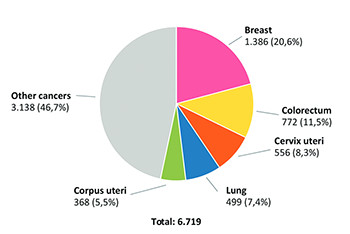2020 consensus guideline for optimal approach to the diagnosis and treatment of HER2-positive breast cancer in Bosnia and Herzegovina
DOI:
https://doi.org/10.17305/bjbms.2020.4846Keywords:
Her2, breast cancer, guidelines, treatmentAbstract
The HERe2Cure project, which involved a group of breast cancer experts, members of multidisciplinary tumor boards from healthcare institutions in Bosnia and Herzegovina, was initiated with the aim of defining an optimal approach to the diagnosis and treatment of HER2 positive breast cancer. After individual multidisciplinary consensus meetings were held in all oncology centers in Bosnia and Herzegovina, a final consensus meeting was held in order to reconcile the final conclusions discussed in individual meetings. Guidelines were adopted by consensus, based on the presentations and suggestions of experts, which were first discussed in a panel discussion and then agreed electronically between all the authors mentioned. The conclusions of the panel discussion represent the consensus of experts in the field of breast cancer diagnosis and treatment in Bosnia and Herzegovina. The objectives of the guidelines include the standardization, harmonization and optimization of the procedures for the diagnosis, treatment and monitoring of patients with HER2-positive breast cancer, all of which should lead to an improvement in the quality of health care of mentioned patients. The initial treatment plan for patients with HER2-positive breast cancer must be made by a multidisciplinary tumor board comprised of at least: a medical oncologist, a pathologist, a radiologist, a surgeon, and a radiation oncologist/radiotherapist.
Citations
Downloads

Downloads
Additional Files
Published
License
Copyright (c) 2020 Semir Bešlija, Zdenka Gojković, Timur Cerić, Alma Mekić Abazović, Inga Marijanović, Semir Vranić, Jasminka Mustedanagić–Mujanović; Faruk Skenderi; Ivanka Rakita, Aleksandar Guzijan, Dijana Koprić, Alen Humačkić, Danijela Trokić, Jasmina Alidžanović, Alma Efendić, Ibrahim Šišić, Harun Drljević, Vanesa Bešlagić, Božana Babić, Azra Pašić, Anela Ramić, Dijana Mikić, Zlatko Guzin, Dragana Karan, Teo Buhovac, Dragana Miletić, Senad Šečić, Azra Đozić Šahmić, Lejla Mujbegović, Alisa Kubura, Mensura Burina, Nenad Lalović, Nikolina Dukić, Jelena Vladičić Mašić, Mirjana Ćuk, Rajna Stanušić

This work is licensed under a Creative Commons Attribution 4.0 International License.









